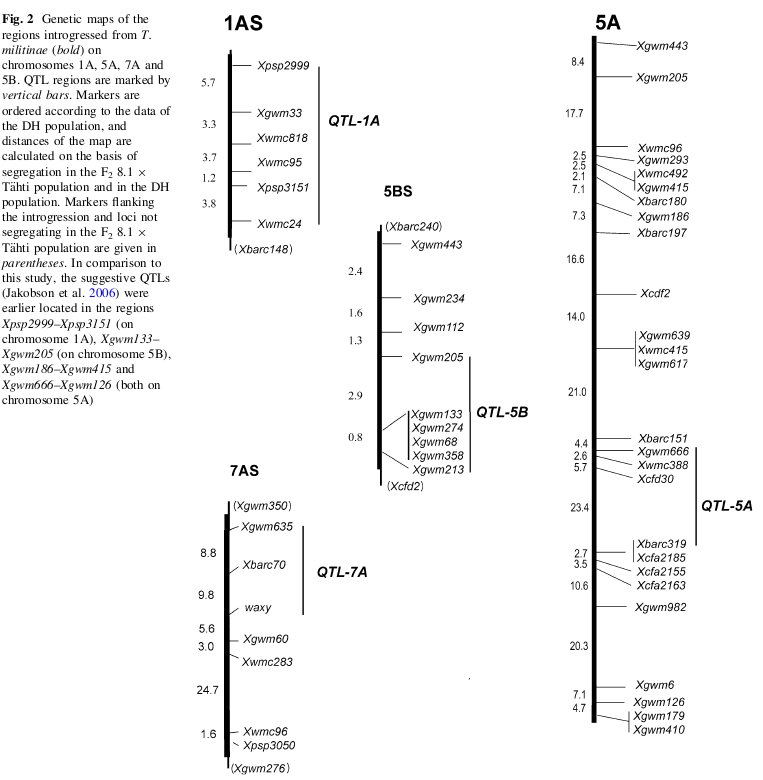|
|
|
Close Help | ||||||||||||||
Fine mapping, phenotypic characterization and validation
of non-race-specific resistance to powdery mildew
in a wheat–Triticum militinae introgression line
Irena Jakobson, Diana Reis, Anu Tiidema, Hilma Peusha, Ljudmilla Timofejeva, Miroslav Valarik, Monika Kladivová, Hana Šimková, Jaroslav Doležel, Kadri Jarve
Introgression of several genomic loci from tetraploid Triticum militinae into bread wheat cv. Tähti has increased resistance of introgression line 8.1 to powdery mildew in seedlings and adult plants. In our previous work, only a major quantitative trait locus (QTL) on chromosome 4AL of the line 8.1 contributed significantly to resistance, whereas QTL on chromosomes 1A, 1B, 2A, 5A and 5B were detected merely on a suggestive level. To verify and characterize all QTLs in the line 8.1, a mapping population of double haploid lines was established. Testing for seedling resistance to 16 different races/mixtures of Blumeria graminis f. sp. tritici revealed four highly significant non-race-specific resistance QTL including the main QTL on chromosome 4AL, and a race-specific QTL on chromosome 5B. The major QTL on chromosome 4AL (QPm.tut-4A) as well as QTL on chromosome 5AL and a newly detected QTL on 7AL were highly effective at the adult stage. The QPm.tut-4A QTL accounts on average for 33-49 % of the variation in resistance in the double haploid population. Interactions between the main QTL QPm.tut-4A and the minor QTL were evaluated and discussed. A population of 98 F(2) plants from a cross of susceptible cv. Chinese Spring and the line 8.1 was created that allowed mapping the QPm.tut-4A locus to the proximal 2.5-cM region of the introgressed segment on chromosome 4AL. The results obtained in this work make it feasible to use QPm.tut-4A in resistance breeding and provide a solid basis for positional cloning of the major QTL.
